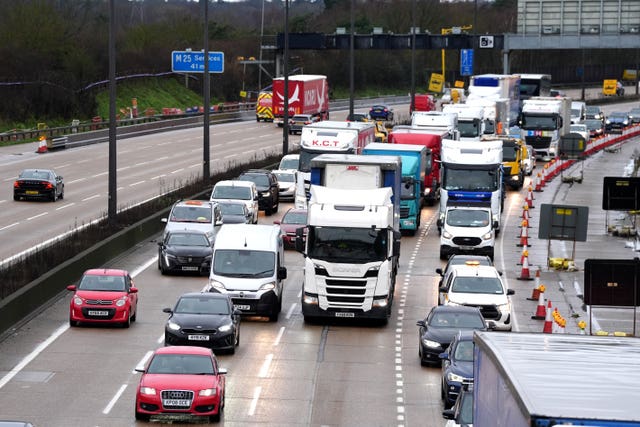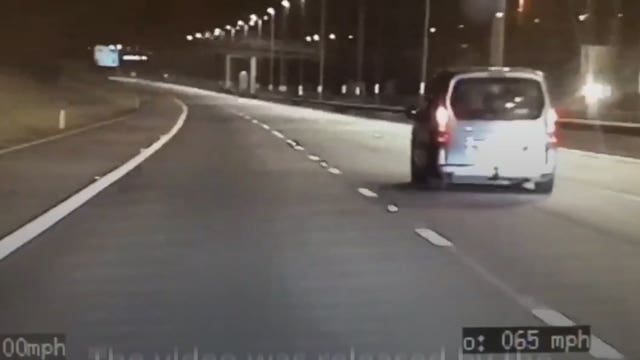UK motorways: The rules and regulations you may not recall
Thousands of vehicles use Britain’s motorways every day, but what are the rules and regulations behind them?

Motorways are designed to allow us to cover further distances in a shorter period of time.
However, when you learn to drive, you’re not allowed on motorways unless you’re with a qualified instructor.
As a result, many people feel a little daunted by their first trip on a motorway, Travelling at greater speeds brings many more requirements than usual and there are additional rules and regulations to bear in mind.
So you’re wondering about some of these motorway-specific rules, we’ve compiled a list of all the regulations you need to know.
Who and what isn’t allowed to drive on a motorway?
There are strict rules and regulations about who and what is prohibited on a motorway.
It’s illegal to ride motorcycles with engines smaller than 50cc and the same goes for mobility scooters, tractors and drivers with only provisional licenses aren’t permitted either. Also, pedestrians and cyclists are also banned, too. The rules changed for learner drivers back in 2018, too, allowing them to venture onto the motorway but only when accompanied by a qualified instructor in a car with dual controls. This doesn’t apply to learner motorcycle riders, however – they’re not permitted on the motorway.
How to enter a motorway?
Joining a motorway is one of the trickiest parts of driving on them. But, there are some rules that you must follow to prevent any accidents from occurring.
Firstly, do not enter the motorway using the hard shoulder as it’s there for emergency vehicles only.
Secondly, check your mirrors much earlier than you should because vehicles will be approaching you at much higher speeds than on a normal road.
Finally, do not cross any solid white lines that separate the lanes on a motorway as they are there to keep you in the right lane before merging onto the road – if you do cross the solid lines, it could result in an accident.
What are the rules for motorway lanes?

The left-hand lane is the section that you should be in whenever you aren’t overtaking a vehicle. If there are no drivers in it, there is no reason why you shouldn’t be using it.
The middle lane is there to allow drivers to overtake slower-moving traffic from the left-hand lane.
Finally, the right-hand lane should only be used when both middle and left-hand sections of the motorway are being used by slower-moving vehicles.
Motorway lanes are designed to keep the traffic flow moving in an effective and controlled manner.
You shouldn’t undertake
Undertaking is a dangerous driving manoeuvre in the UK, and it should not be permitted anywhere on our roads – especially on a motorway.
Drivers who obey the rules of the road will know that after passing a vehicle on a motorway, you should move back to the left after completing an overtake.
However, undertaking increases the risk of an accident because you’re overtaking a slower-moving vehicle from the left-hand side, making the other driver unaware of your presence – potentially causing both vehicles to come into contact.
The Highway Code does state, however, that it’s okay to undertake in slow-moving traffic if your lane is moving more quickly than the one to the right. The Code states: “In congested conditions, where adjacent lanes of traffic are moving at similar speeds, traffic in left-hand lanes may sometimes be moving faster than traffic to the right.
“In these conditions you may keep up with the traffic in your lane even if this means passing traffic in the lane to your right.
“Do not weave in and out of lanes to overtake.”
Don’t sit in the middle lane

However, do not ‘hog’ the middle lane as it can upset the flow of traffic on the motorway and could lead to an accident.
Middle lane hogging goes against the Highway Code as a driver should move back to the left when the road ahead is clear.
Where can you stop on the motorway?
Stopping on a motorway is never an ideal situation as it can be extremely dangerous.
You should never stop on a carriageway, slip road, central reservation, verge or hard shoulder unless it’s an emergency.
The only exception for stopping on a motorway is when you’re told by a police or traffic officer, or by a road sign. Of course, if you’re in an emergency situation, pull over on to the hard shoulder or an emergency refuge area if you’re on a smart motorway.
Advice for driving on a motorway
The best advice when you’re driving on a motorway is to be prepared. If you’re travelling longer distances, do simple checks on your car such as testing tyre pressures to ensure that they’re at the correct levels. Look at the sidewalls of the tyre to see if there are any cuts or bulges, too, as this could lead to a blow-out when moving at greater speeds.
Plan your route in advance as motorways can become congested with the amount of traffic that uses them daily.
If you’ve never driven on one, get as much practice by entering a motorway, overtaking and driving at higher speeds as it will build your confidence.





